David Olenick’s designs pair pun-filled sayings with charming animals and objects, each with his signature googly eyes.
His cleverness, sense of humor and unique perspective shine through by making seemingly simple illustrations universally relatable. We tagged along with David in New York City to see how and, more intriguingly, where he comes up with these concepts.
To get started, what’s a normal day in your life look like? Your artistic process, sure—but I also love hearing about something as simple as your morning routine.
Well, I get up at 6am, my girlfriend makes the bed, and then I re-make it because I’m an OCD nightmare. We take daily morning walks early enough to avoid other people, and try to commune with trees, birds, squirrels and other creatures that have never shared something racist on Facebook.
After that, it varies—I essentially have three types of days:
- “Input Days” (1-2 days a week) resemble most people’s weekends, but usually happen on a weekday for me. The idea is to get out of the studio and feed my brain. It’s not a break from working, but rather a key part of my process. It’s usually a full day walking around the city with my girlfriend, getting inspired by things like galleries, museums, movies and concerts. Sometimes we include a little market research at a stationery shop or fashion boutique. This is all bracketed by two extended brainstorm sessions over breakfast and coffee—then dinner and drinks.
- “Output Days” (2-3 days a week) are when I execute the ideas from my “Input Days”, and this usually happens on weekends when it’s quiet and I’m not getting calls and emails. They’re also when I work on social media posts for the upcoming week. On “Output Days,” I’m going for intense focus—headphones on, curtains closed, shutting out distractions like noisy neighbors or the natural world.
- “Maintenance Days” (2-3 days a week) are when I answer emails, take calls, set up art files and address anything else my licensees need. These days are truly joyless and require winding down with half a bottle of Netflix and several episodes of wine.
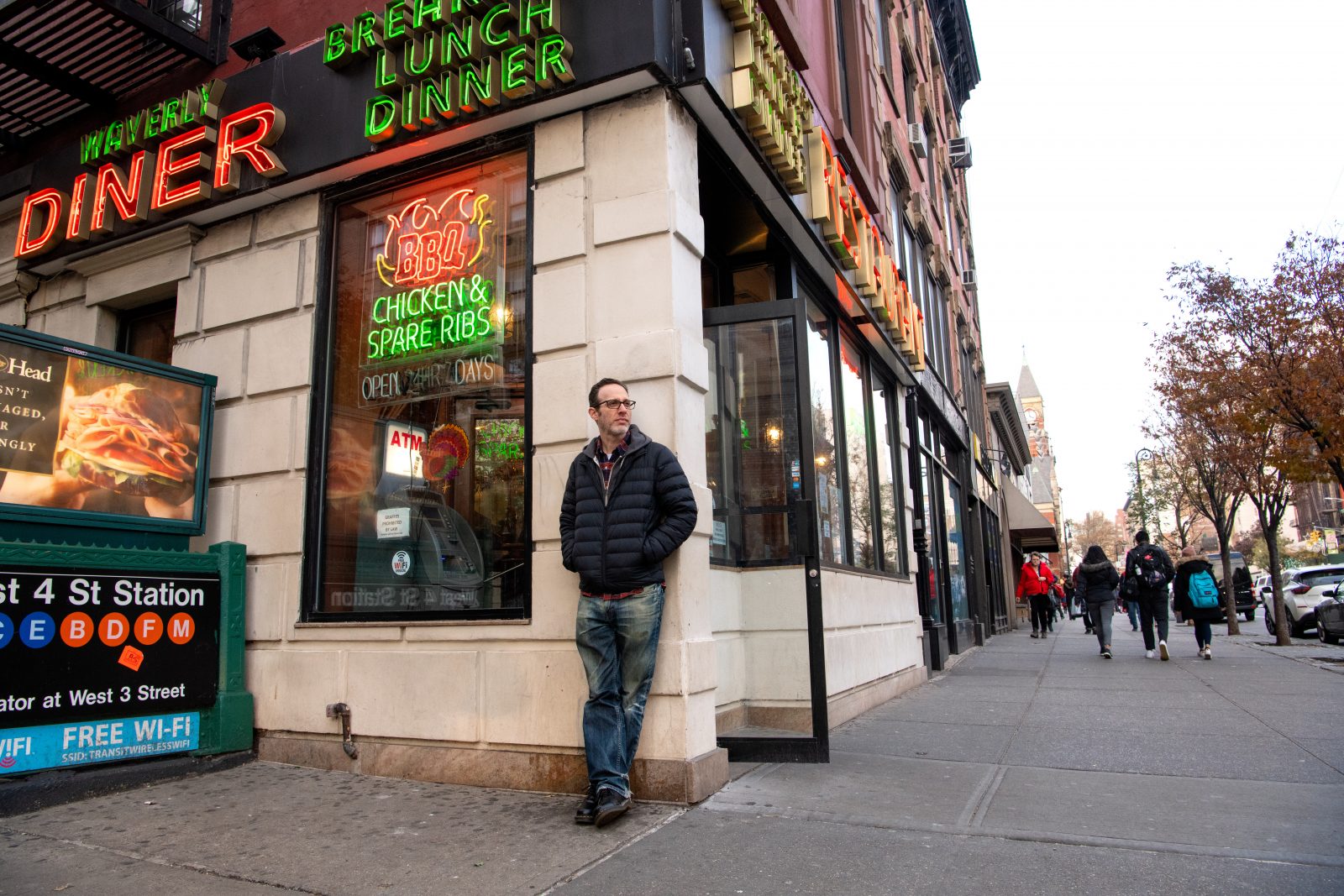
Your input/output/maintenance weekly schedule is fascinating. It makes so much sense but I’ve never heard of it before. Is it something you created or did you learn it from somewhere?
It’s my own way of describing what has developed naturally over the years, in terms of my process and workflow. Though, when I think back, I can see some indirect sources for it. I worked in the fashion industry for many years, and that calendar, while very different from my current one, had specific phases each season for research/shopping, concept/moodboards, design, then execution. It’s kind of like I’m doing a mini “season” each week.
The philosophy behind my schedule is partially inspired by interviews I’ve seen of Milton Glaser and his ideas about how best to approach design. Specifically, the idea that you need to really participate in life and culture in order to have anything to work with when you’re trying to be creative.
You can learn more about time management from my upcoming Skillshare course, “How To Draw More Faces On More Things Than You Are Currently”, which will be available online never.
I noticed you mentioned your girlfriend was along for many of these adventures—is she an artist as well? What’s that relationship like, as it pertains to creating art/maintaining schedules/staying creative?
Yes, she’s also an artist, and we try to sync up our schedules as much as we can so we’re both in the same phase (input/output/maintenance) at the same time. So, for example, if we’re both drawing, we can put on a podcast in the studio, which we couldn’t do if she’s drawing and I’m answering emails. Having a partner like that is kind of a secret weapon—when an idea or sketch can be passed back and forth a few times between a couple of clever people, it tends to come out especially shiny. We check in with each other on all phases of our projects; but eating, drinking and drawing together is our best catalyst for staying both creative and bloated.
It’s obvious you have a great sense of humor and I know through other interviews that you keep a hefty journal of ongoing thoughts/ideas. Can you break down that process for us? What percentage of time you spend on each phase of creation? How many ideas does it take for one to come to fruition?
I’d say I spend about 1/4 of my time generating ideas, 1/4 refining the language and sketching, 1/4 executing final designs and 1/4 doubting everything I’ve done in my life up to this point. Each phase is equally important. Ideas that come to fruition are far outnumbered by ideas that don’t make the cut. I have to fill several pages of my notebook to find a few things I can make funny enough, so I’m always working to improve my productivity. Lately, I find that bouncing ideas off other people accelerates the process, especially if one of those people is three glasses of Sauvignon Blanc.
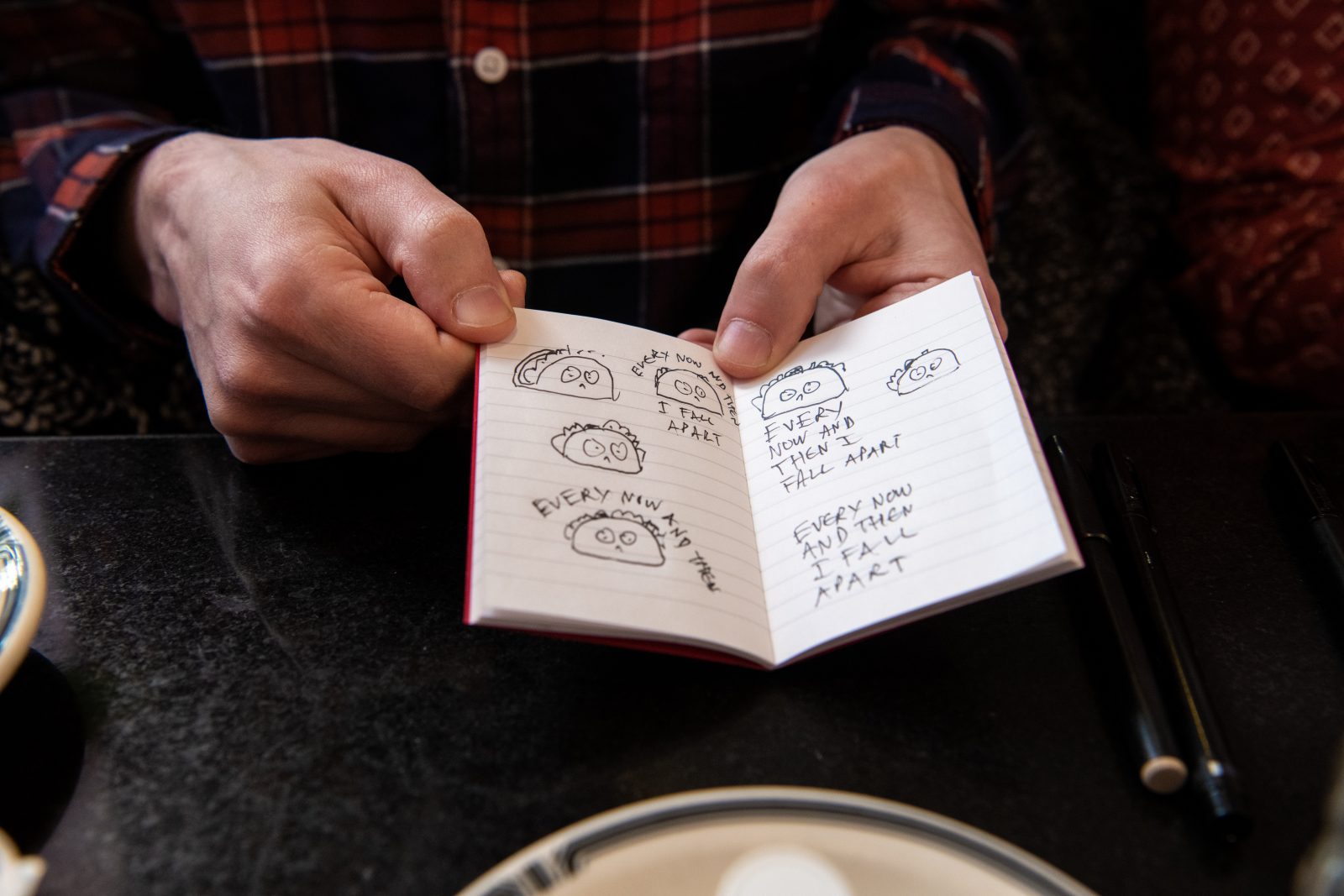
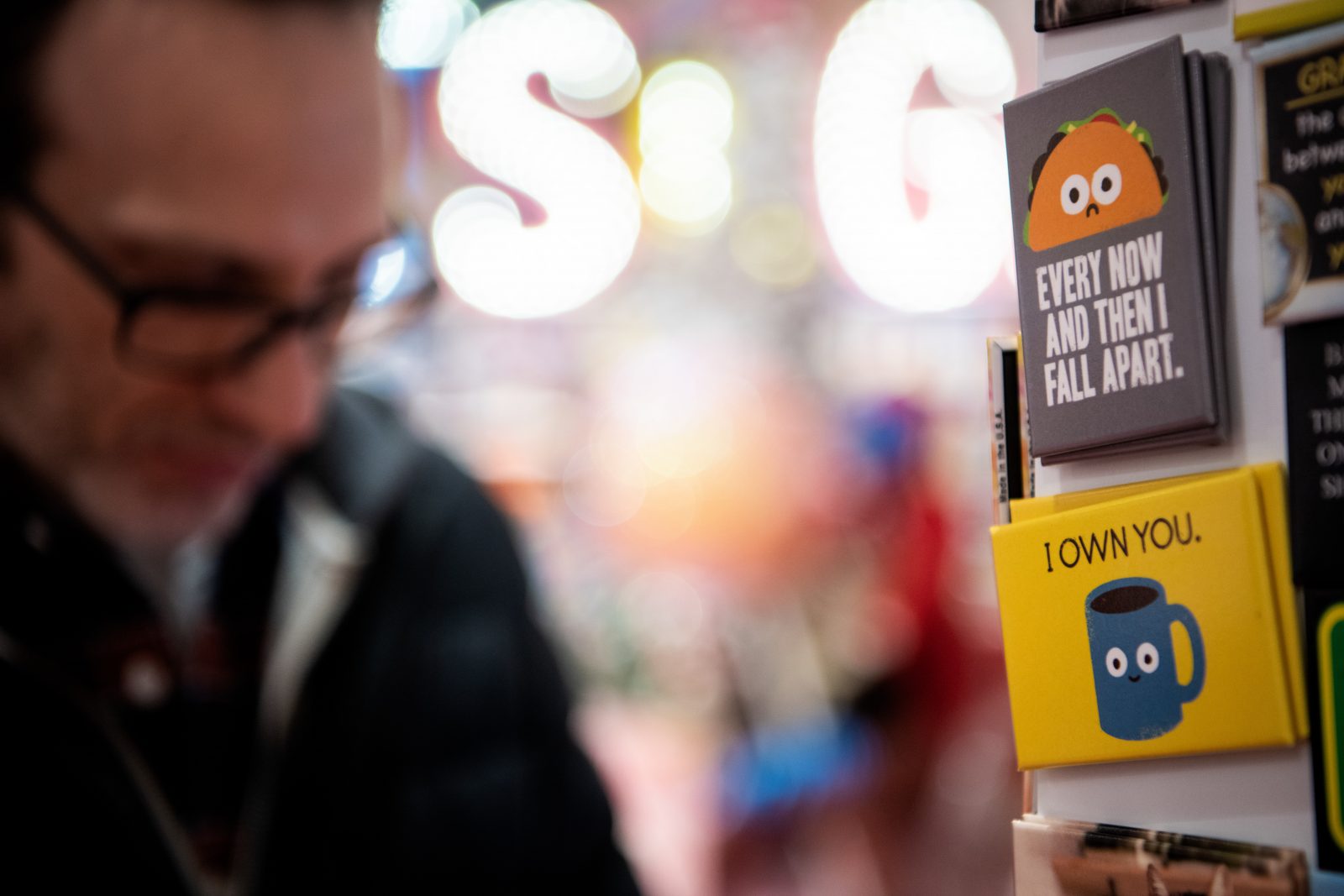
Where did your sense of humor begin? Is your family funny too?
Both my parents are Ashkenazi Jews from New York, so many of my relatives had Borscht Belt-style comic timing. They were the kind of people who sound funny even when they’re being serious. My dad in particular, while in no way outgoing or social, was very funny in a dry, deadpan way. I clearly absorbed those rhythms starting at a very young age, and it’s compensated nicely for my inability to feel relaxed or self-assured for more than four consecutive minutes at a time.
Have you ever written anything longer-form? Stand-up, script writing, novels, poems?
The only longer-form things I write are jokes for the captions of my social media posts and the interior messages in my greeting cards. I’ve done toasts and speeches at events, and inevitably people will tell me I should do stand up, but I find that process far too arduous and stressful to be enjoyable. Someone with acute social anxiety probably shouldn’t make his living walking into a room full of strangers and arranging for all of them to stare at him at the same time.
What are some other influences of your work at large?
My work has been influenced by Late Night with Conan O’Brien, Mondrian’s paintings and my deeply unhealthy relationship with baked goods.
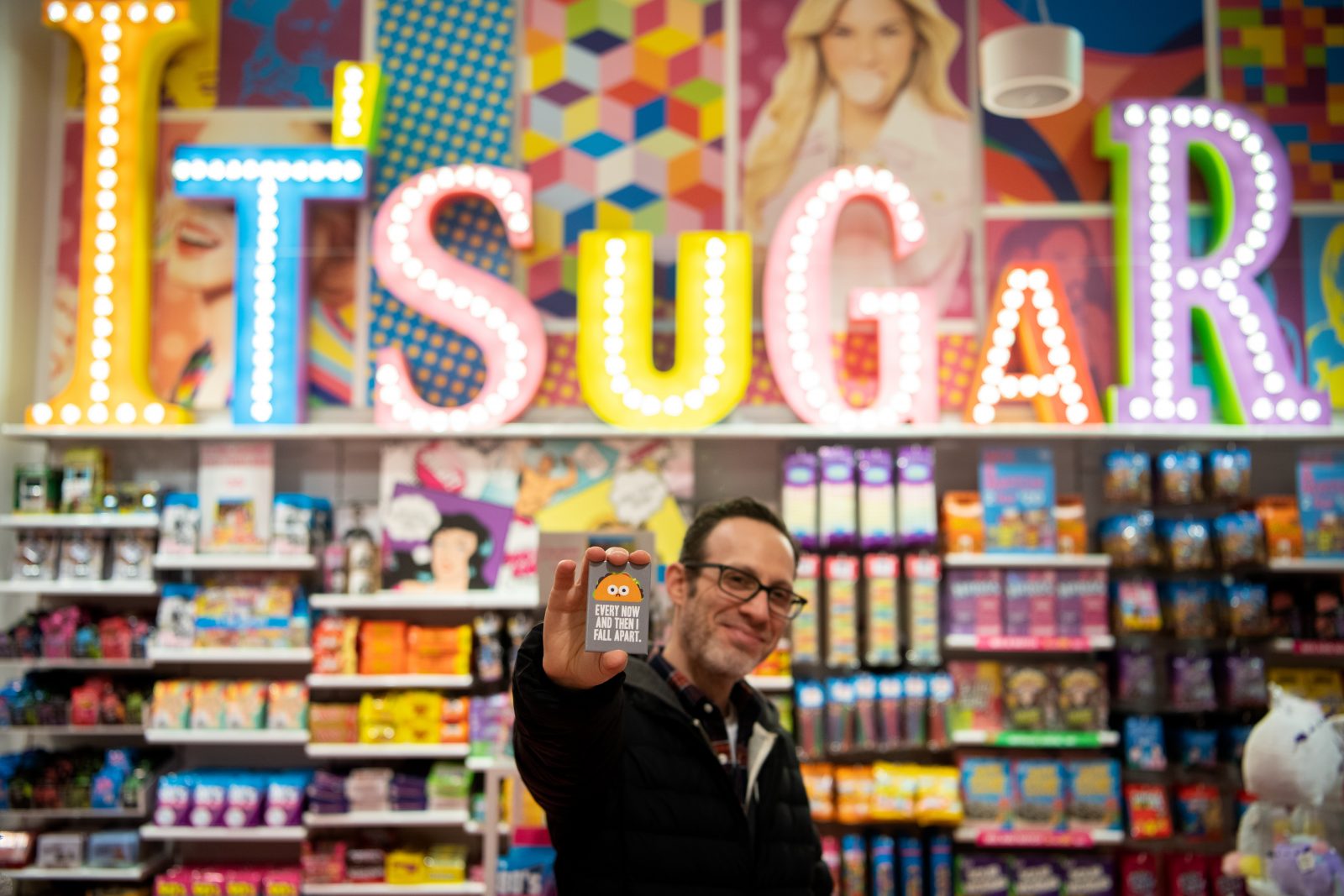
You mentioned that your home studio is in a bit of flux so you’ve allowed us to tag along to some of your old haunts around NYC. Can you talk about some of these spots and why they’re so special to you?
It’s easier for me to be creative and funny when I’m out somewhere enjoying myself. Lots of my art is about food, so doing as much of the work as I can in restaurants and coffee shops makes sense. It’s also a much more joyful process than sitting at a desk staring at a blank page. I love being able to look through my catalog of designs and remember exactly where I was (and what I was eating) when I came up with each one.
Diners are a great place to work because they’re cheap, always open, and they’ll let you sit there for hours with unlimited coffee refills. It’s key to get a booth for privacy and coziness, and you can still take advantage of the top-notch people watching. Diners are good for a brainstorm, but they’re the best for hunkering down, spreading out your materials on that big table and refining sketches or organizing bigger projects.
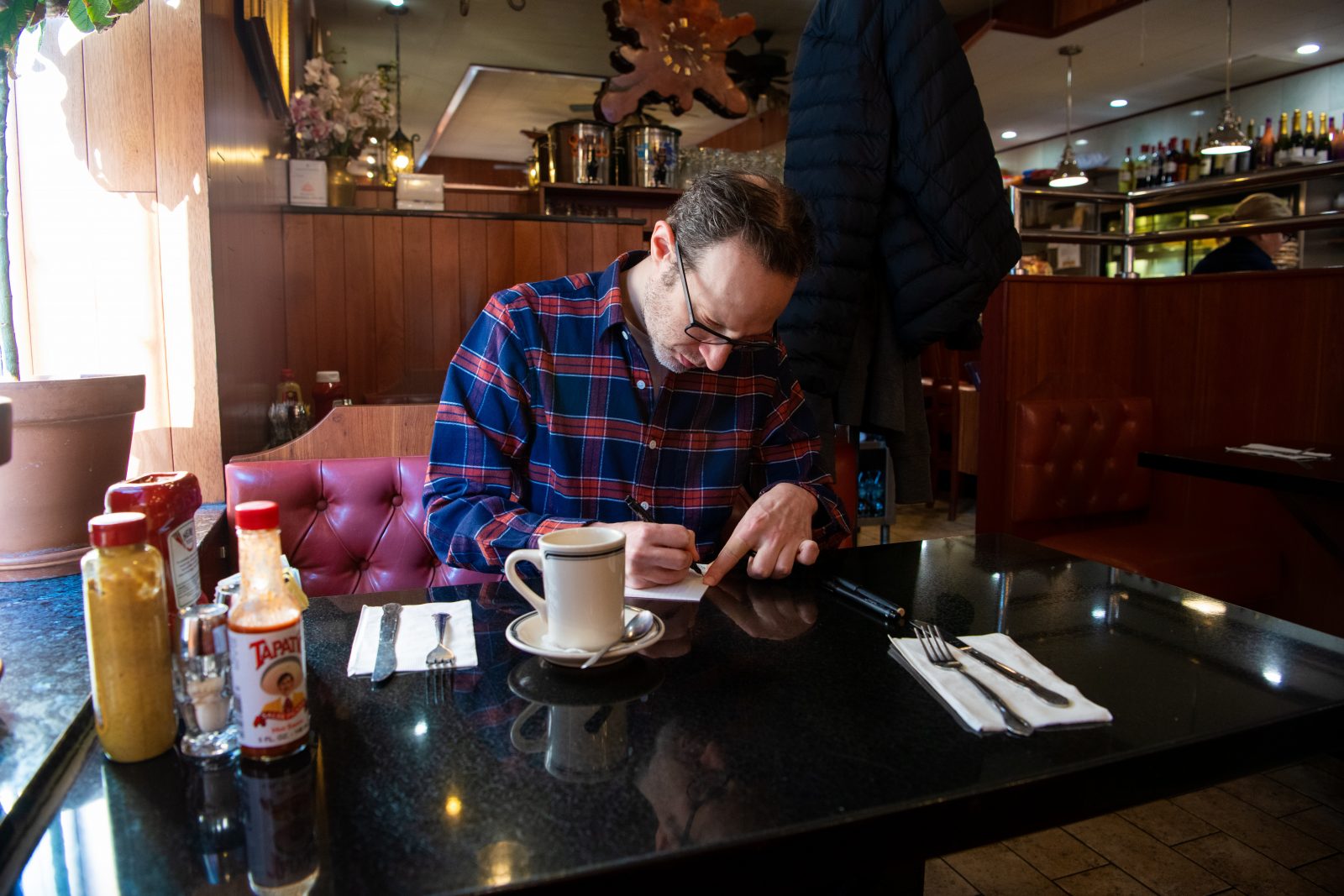
For brainstorming, I like things to be a bit more festive. Mexican restaurants are my #1 place to drink myself into a flow state and think of some funny shit. Specifically, traditional Mexican places, with the chili pepper lights and mariachi music. One of my favorite memories is of an all-day Sunday happy hour with my girlfriend thinking of Christmas card ideas. We just kept the food and drink coming while we wrote, sketched and busted a gut, and I had to remind myself that this wasn’t irresponsible, but was in fact my job.
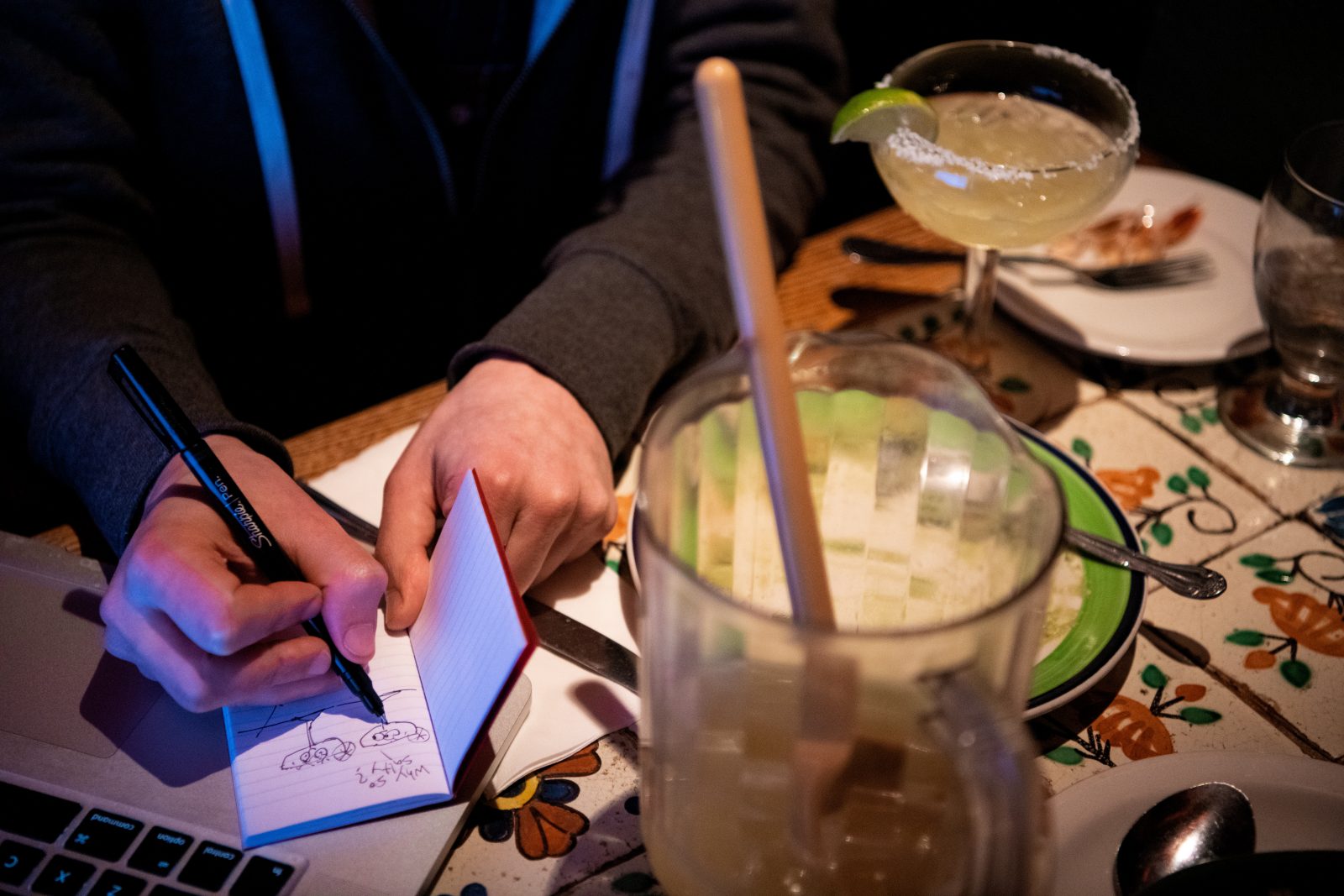
Museums have always been one of my biggest sources of inspiration. It’s been an absolute privilege having access to the Metropolitan Museum of Art for the last 20 years or so. If my work is at all unique and distinctive, it’s because I’m less influenced by other commercial art than I am by time spent walking among the antiquities and abstract paintings at the Met. In other words, the entire history of human aesthetic achievement has culminated in my drawing of a sad taco with eyes.
I grew up near the Smithsonian, and I’ve been obsessed with natural history museums since I was a kid. Other than food, animals are my favorite subject to draw, and I can’t get enough of walking through the wildlife dioramas and imagining what some of those creatures might have to say.
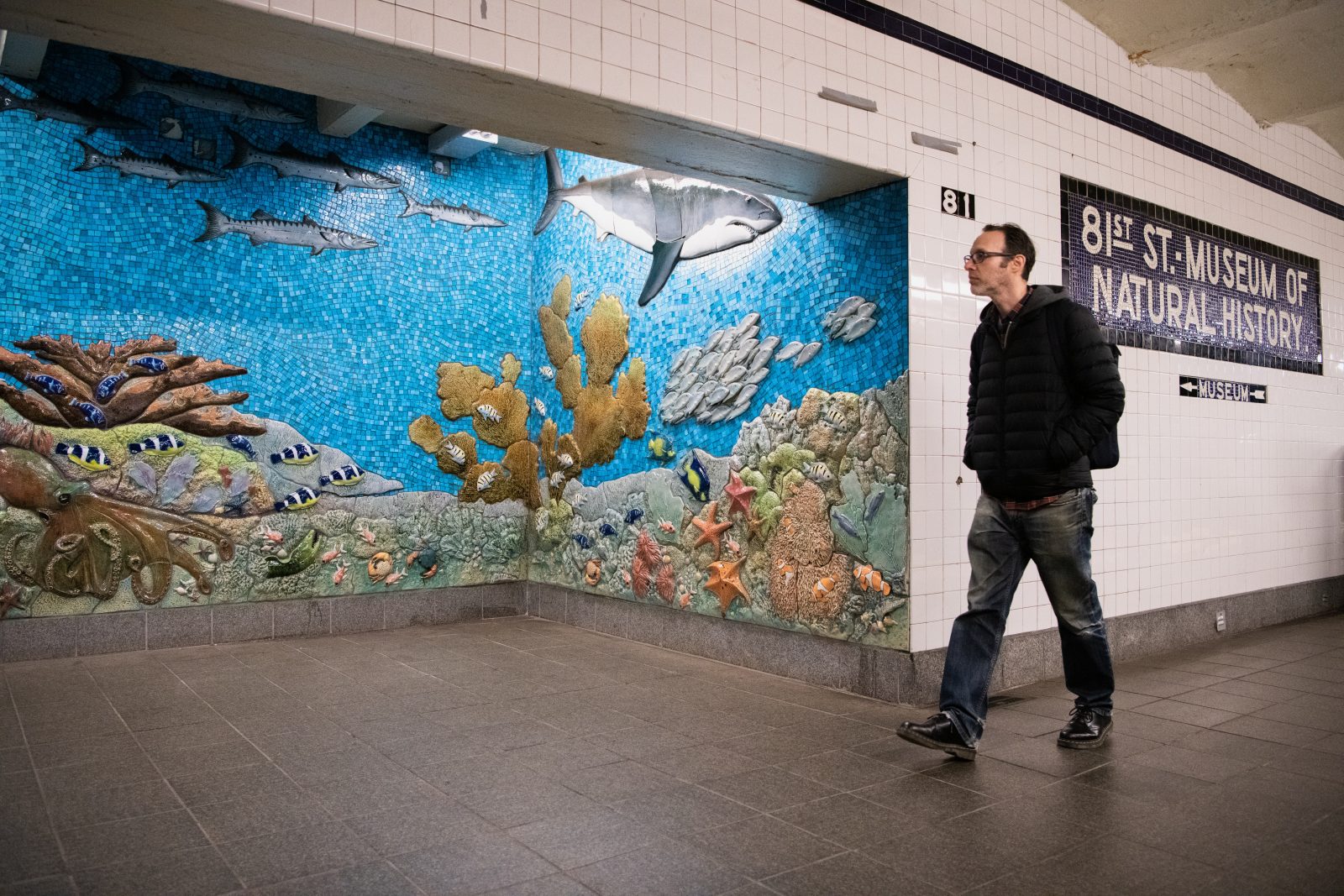
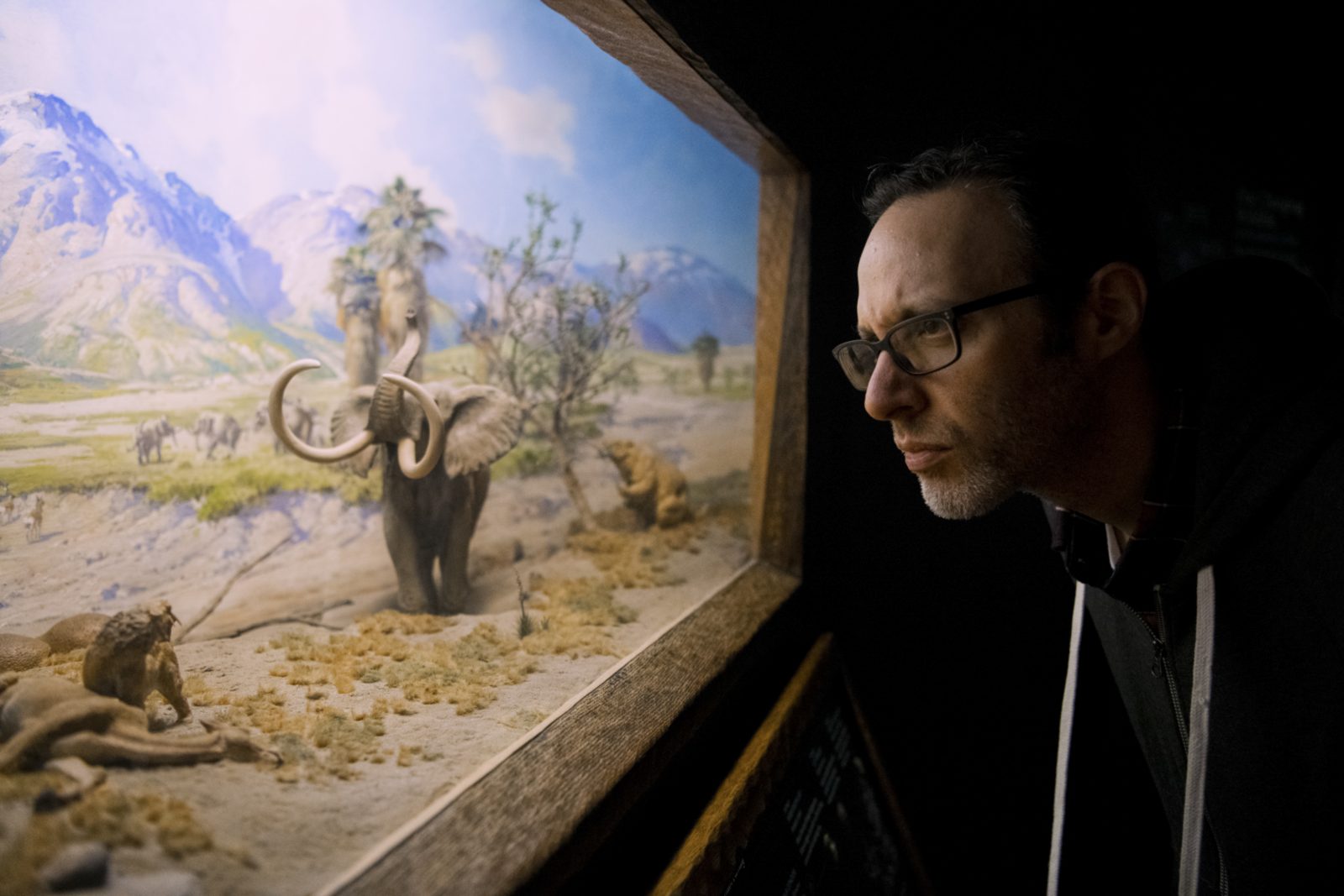
Finally, browsing at the Strand Bookstore is an incredible resource. It’s like Disneyland for bibliophiles, and it’s one of my all-time favorite New York City activities to feel smug about.
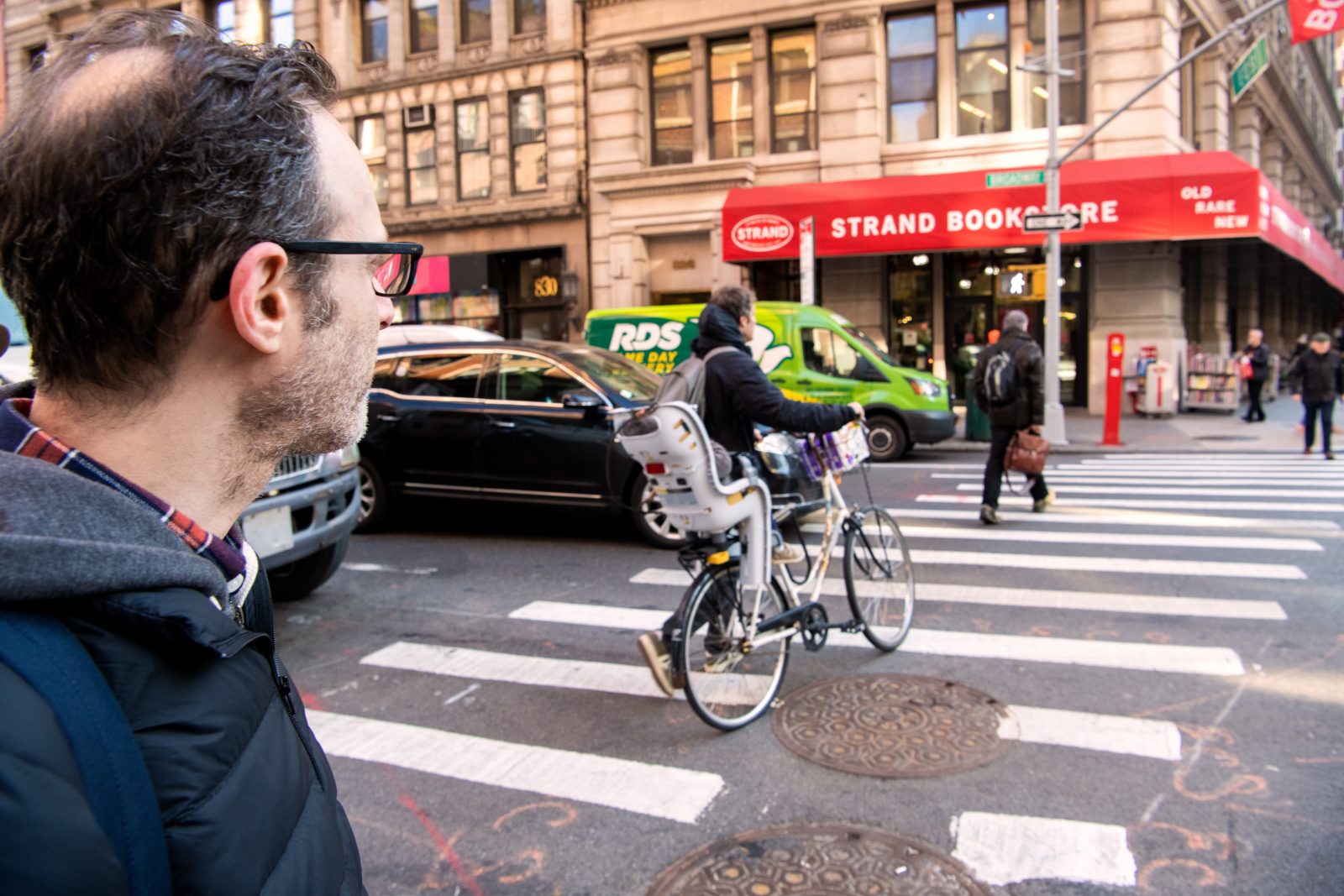
I have to circle back on the subject of wildlife dioramas because, on a personal note, I. Absolutely. Love. Them! They’re my favorite exhibits at natural history museums and I always worry it’s a dying art form/museum staple so it’s encouraging to see more diorama enthusiasts out there. I realize the following questions are probably only interesting to the dwindling population out there of diorama enthusiasts… but do you have a personal favorite? One you always return to/want to live in/gather interesting inspiration from?
I’m totally with you on the dioramas – I’ve been obsessed with them since I was a kid, and I’ll be super bummed if they’re replaced by what new technology can offer. Science can only benefit from being presented artfully – I don’t think many people will keep coming back for 40 years to see an interactive digital diagram. The dioramas I return to most often are the ones with the XXL creatures. In New York’s Natural History Museum, some of my faves are the truly frightening standing bear from the Hall of North American Mammals, the various antelopes with big-ass horns from the Hall of African Mammals and the cinematic wolves in moonlight from the Hall of North American Mammals.
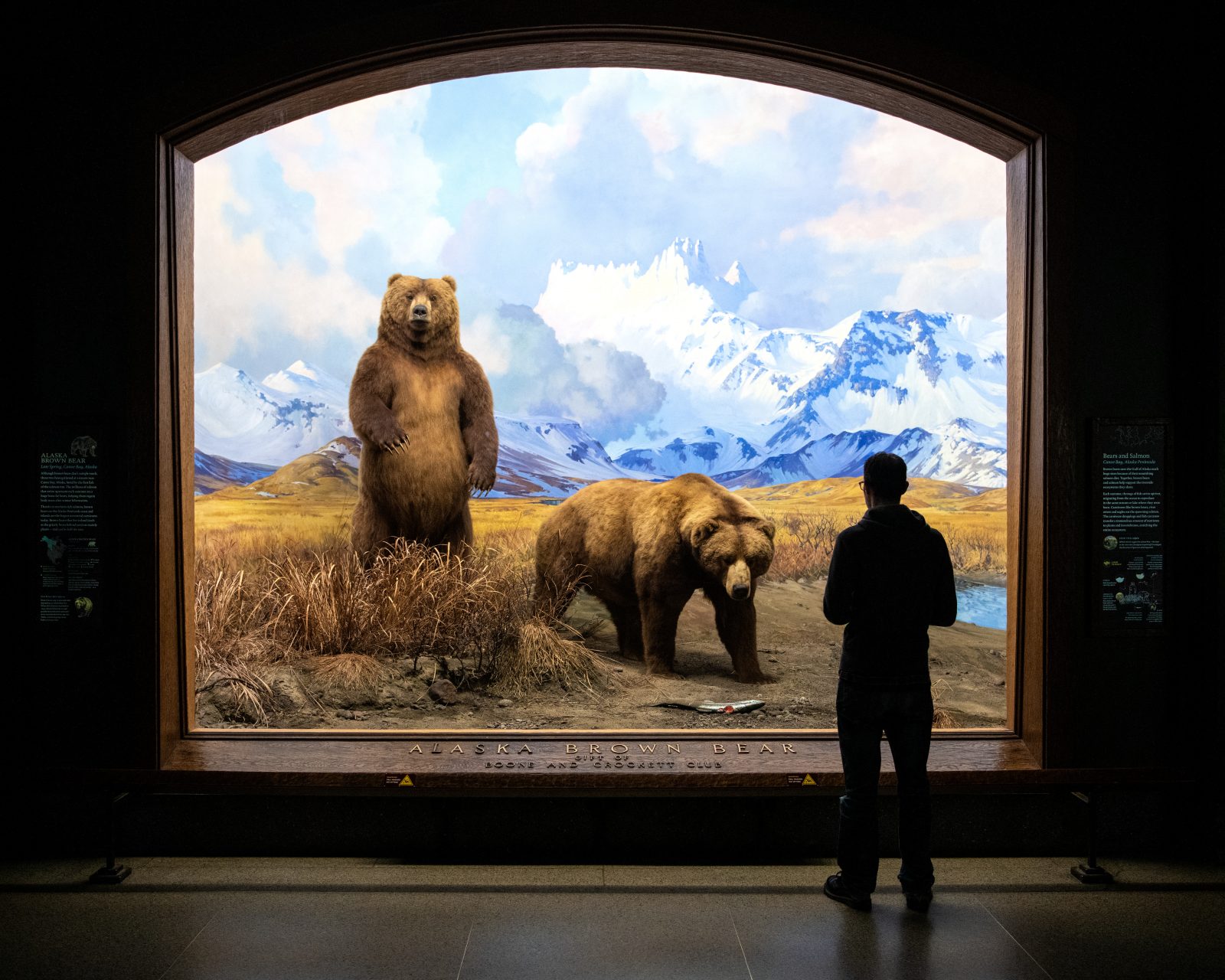
One thing I enjoy doing is casually walking over to whoever I’m with and working into conversation a line I just read from the placard next to the exhibit, as if it came off the top of my head: “You know, I was just thinking… thanks to nutrient-rich salmon, brown bears on the Alaska Peninsula coast and islands are among the largest terrestrial carnivores today.”
I hope my HAHAHA will do your story justice because I’m rolling… and will absolutely start doing this myself moving forward.
Anyways, before we lose too many people by talking wildlife dioramas for the next hour…
I’m curious if you could share some fun/interesting stories behind your designs and the inspiration behind them?
The thing is, where I am (and what I’m eating) rarely directly inspires that day’s ideas. For instance, I came up with my recent series about Asian foods over guacamole and queso fundito—but sometimes, ideas do come straight from my surroundings. One recent example is a woman who shouted into her phone “MIND YOUR DAMN BUSINESS” the moment she passed me on the street. I pulled out my notebook, sketched that phrase with a beaver and had another one (design) in the bank.
A few of my popular designs have memorable origin stories. Taco Eclipse of the Heart (“Every Now and Then I Fall Apart”), my top seller of all time, almost never happened. One late night when I was especially exhausted and simply wanted to go to bed, my girlfriend chose that odd hour to try to initiate a taco brainstorm. I really fought her on it, but fortunately she would not let it go.
Another popular design, Abandoned Chip (“This is Guacward”) started out as a hand-drawn Valentine I made for her, proving that even the most private moments can be callously exploited for profit if you’re willing to work at it.
For our artists who also write, I love hearing how that dynamic plays out. What would you say are the biggest differences and biggest similarities between the writing and illustrating process? Is there one your prefer over the other?
The difference between drawing and longer-form writing especially, is that writing can start to feel like work for me in a way that drawing never does.
The similarity between drawing and writing for me is the process. Both involve taking the germ of an idea (a quick doodle or a few words jotted down), developing and refining it, all in search of exactly the right combination of words or shapes to make the joke come across just so.
As I’ve just demonstrated, another similarity is that any attempt to explain either one of them makes you sound like a pompous douchebag.
You’re very open on social media, allowing fans and followers to ask you questions through your Facebook, etc. What’s your experience been like there? How do you keep level-headed and positive on social media?
I’m glad I come off very open, but I’ve been pretty careful with social media – I know it can go sideways on you in various ways. It’s helpful that since childhood I’ve been content to be a bit of an “acquired taste” and never had the expectation of winning popularity contests of any kind. I also try to work with licensees who are able to promote my work independently of social media, so my ability to make a living isn’t subject to the whims of the algorithm. The result of all this is that the stakes aren’t so high for my posts.
I’m pretty sure I’m not doing social media correctly. I’m not a “fake it till you make it” guy, and I’m firmly committed to do whatever the opposite of “hustling” is. I don’t take selfies, because I have the kind of face that looks better on a podcast. When I do appear in photos, I try to show my best angle—which is the back of my head.
Primarily, I think of social media as a way to document for myself what’s going on with my art, so any engagement feels like a bonus. I also see it as an additional creative outlet. I love having the opportunity to write a few funny captions every week, and it’s fun staging product photos with junk food as a thin pretense for eating junk food.
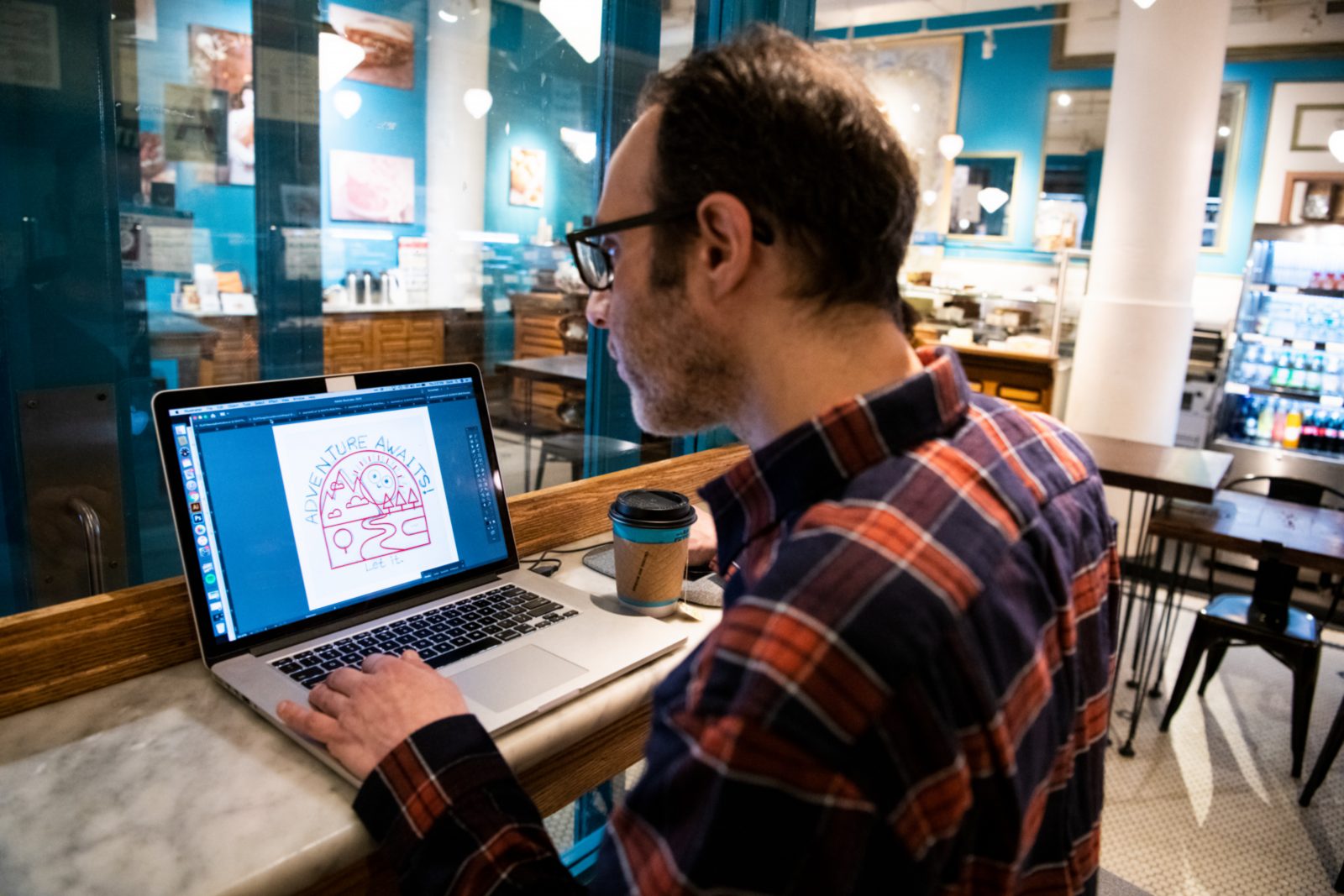
What’s next? Anything you’ve always wanted to tackle creatively, doesn’t necessarily have to be in the works even, just a bucket list type of project?
Right this second I’m working on a daily calendar for 2021 that I’m excited about because I’ll get to incorporate some longer-form jokes in addition to my designs.
When I was in college I used to love drawing caricatures and portraits, and I’ve always thought I’d do that again at some point.
Honestly though, I enjoy the drawings I do now so much that, for the most part, all I want is to keep doing them. I’m giving mental and physical health top priority these days, and after years of sustained stress working for other people, I feel lucky to have found the licensing model, where I essentially draw what I want, put it out there and make a living from it. It feels like the ultimate life hack, and the only thing I’m looking forward to more than my next drawing is my next serving of carbs—which I will regret almost immediately.
BONUS QUESTION: You have such a fascinating mix of influences and interests that I think you’d be perfect to answer this question. If you couldn’t design/create art, what career would you choose for yourself? Is there a hidden passion or something that if you had a second lifetime you would’ve loved to pursue?
I was a pretty good heavy metal drummer back in the day. I had voluminous waist-length hair and was in a band playing clubs in DC and Baltimore when I quit and moved to NYC to do art and design. It certainly would have been fun pounding for a living, but I definitely made the right career move, and I’m grateful now to be in a position to go bald gracefully.
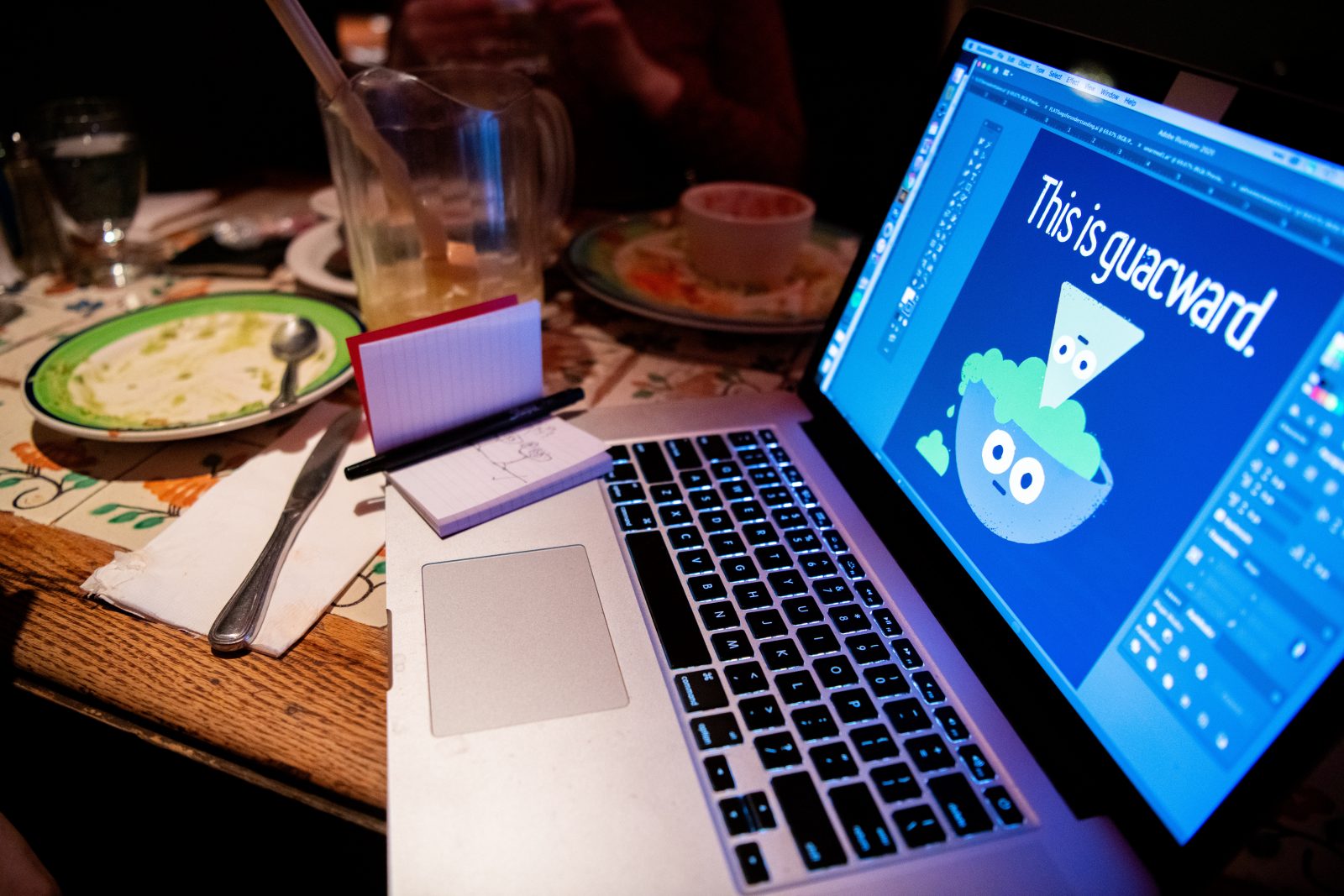
Well, if that’s not an excellent note to end on, I don’t know what is. It was a pleasure meeting you David and I’m so happy to learn that your designs are just the tip of the comedy iceberg that is you. Thanks for taking us on a tour of NYC and if your success is any indication, artists need to leave the classic cafe workspace behind and start getting their work done with a plate of nachos and some blaring mariachi music…
Photos by Carlos Vigil
Comments